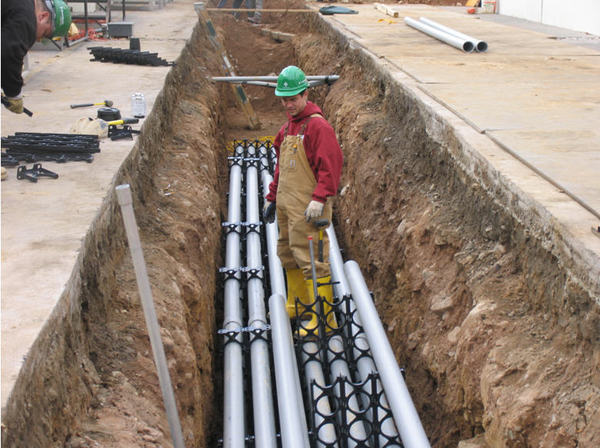New addition
People approaching the Museum from the Parking lot or Washington Avenue may have noticed construction materials and machinery behind a green fence. The Museum is building a new addition which will provide space for art delivery, packing, and crating. Once the building is complete, it will be relatively discreet, as it was designed to be ‘nestled’ into the hill.

There are a number of activities going on right now. First, trenching is being done for new electrical service to the building. The new electrical lines will run underground in the street from Eastern Parkway, then down Washington, and across our parking lot, and into the building. Once the trench is complete, electrical and phone lines will be placed in the hole. As might be expected, we discovered some large rocks, or boulders along the way. One very large one took about a week to remove. The technique used was to drill many holes into it and shatter it, remove the pieces, and do this repeatedly until completed.

Next, excavation will begin on the east side of the building, so that foundations can be poured for a new two story building. There are a number of large old trees near the building site. In order to help one of them survive, we air spaded the roots. This is a process of exposing the roots using air, not shovels, so they are not damaged. Because no large roots had to be cut where large trees cross the construction area, the tree will survive.
Having this addition will give us a dedicated art loading dock for the Museum, so that sandwiches, paper, and the myriad of other things delivered to the Museum are separate from the art! The building will also house mechanical equipment that will enable the eastern section of the museum to be air conditioned. As some people know, our building was built in stages, starting in 1897. At that time air conditioning was not considered essential for museums. Today, both to keep the environment stable for art and visitors, not only temperature control, but also control of humidity is considered ideal for art. We will have had, and will continue to have quite a few projects that are leading us to full climate control for our collections.

Ann K. Webster is the Vice Director of Planning at the Brooklyn Museum. Prior to coming here, she developed and executed capital projects for CUNY (Brooklyn College and Hostos Community College) and Metropolitan Museum of Art (at the Cloisters). She was trained as an architect and has degrees from Wesleyan and Columbia Universities.
